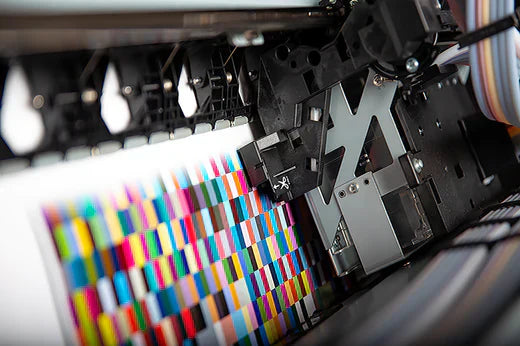Digital printing technology has revolutionized the world of printing. The printing industry has undergone significant changes in recent years, thanks to the latest trends in digital printing. Digital printing has become a prominent method of printing for most industries. It has surpassed traditional printing technology in terms of speed, efficiency, and versatility. The latest trends in digital printing technology are poised to redefine the world of printing.
One of the latest trends in digital printing is personalized printing. Personalization is becoming increasingly popular in the world of printing. Businesses and organizations have realized the potential of digital printing in delivering personalized printed products. The technology allows them to create personalized content for their clients, whether it is books, catalogs, or marketing materials. By leveraging data-driven customization, they can deliver tailored products that meet the individual needs of each client.
Another trend in digital printing is the use of UV ink. UV printing is a technology that prints using ultraviolet light to cure the ink. It provides high quality, durable and long-lasting prints. The technology has gained popularity because it doesn't use solvents, thus making the printing process eco-friendly. UV printing is suitable for printing on almost all types of substrates, including plastics, glass, and metal.
Image quality is also an important aspect of digital printing. The latest trend in digital printing technology is the use of high-resolution printers. High-resolution printing allows designers to create intricate designs and detailed images with excellent color accuracy. The printers offer superior printing quality, delivering sharp and vivid images with higher resolutions than ever before. This has made it possible to produce intricate designs with perfect color accuracy, which is essential in industries like fashion, art, and photography.
3D printing is yet another trend in digital printing technology. 3D printing is rapidly gaining popularity due to its ability to print three-dimensional objects from digital files. The technology has diverse applications, from industrial design to healthcare, architecture, and fashion. 3D printing enables designers to create prototypes faster, and produce items that would be impossible to make using traditional manufacturing techniques.
Flexibility is another trend that makes digital printing technology stand out. Digital printing technology allows printing on different formats, including banners, flyers, posters, labels, and more. Furthermore, digital printing allows for small print runs, making it a cost-effective solution for printing smaller quantities. This has enabled businesses to produce customized materials in smaller quantities at a lower price, thus reducing their production overheads.
In conclusion, the latest trends in digital printing technology are rapidly transforming the printing industry. Personalization, UV ink, high-resolution printers, 3D printing, and flexibility are some of the latest trends that are revolutionizing the way printing is done. These technologies are making it possible to produce high-quality, customized prints at reasonable prices, making digital printing an attractive option for businesses of all sizes. As technology continues to evolve, digital printing is likely to become even more versatile and innovative.
Digital Printing. The Latest Trends.

